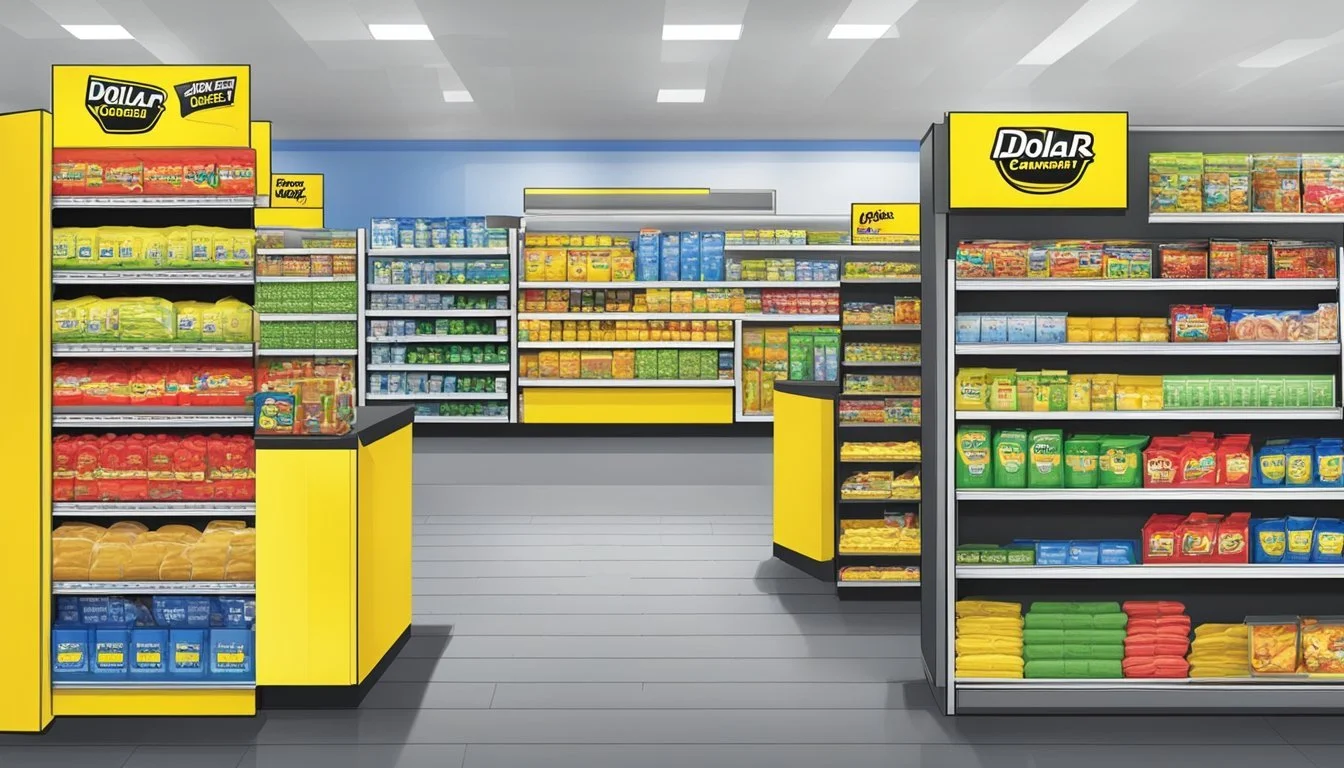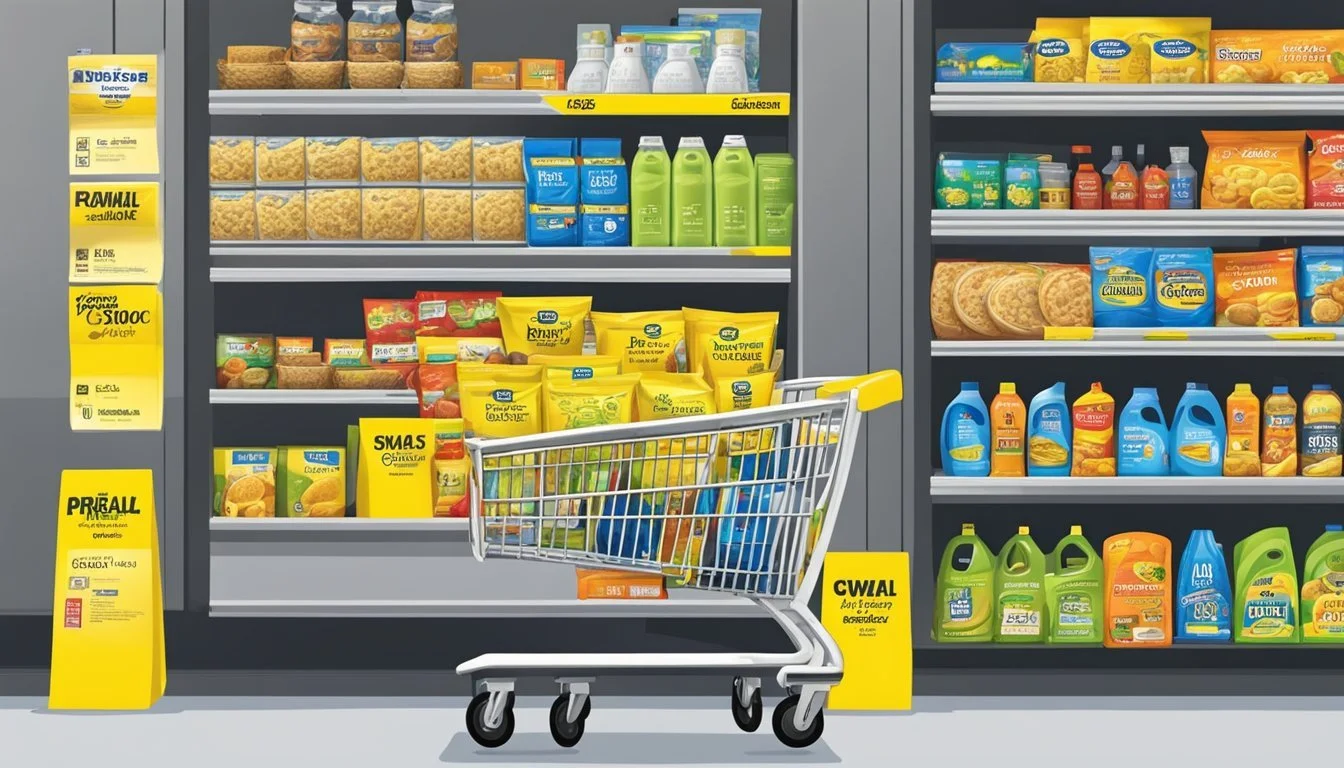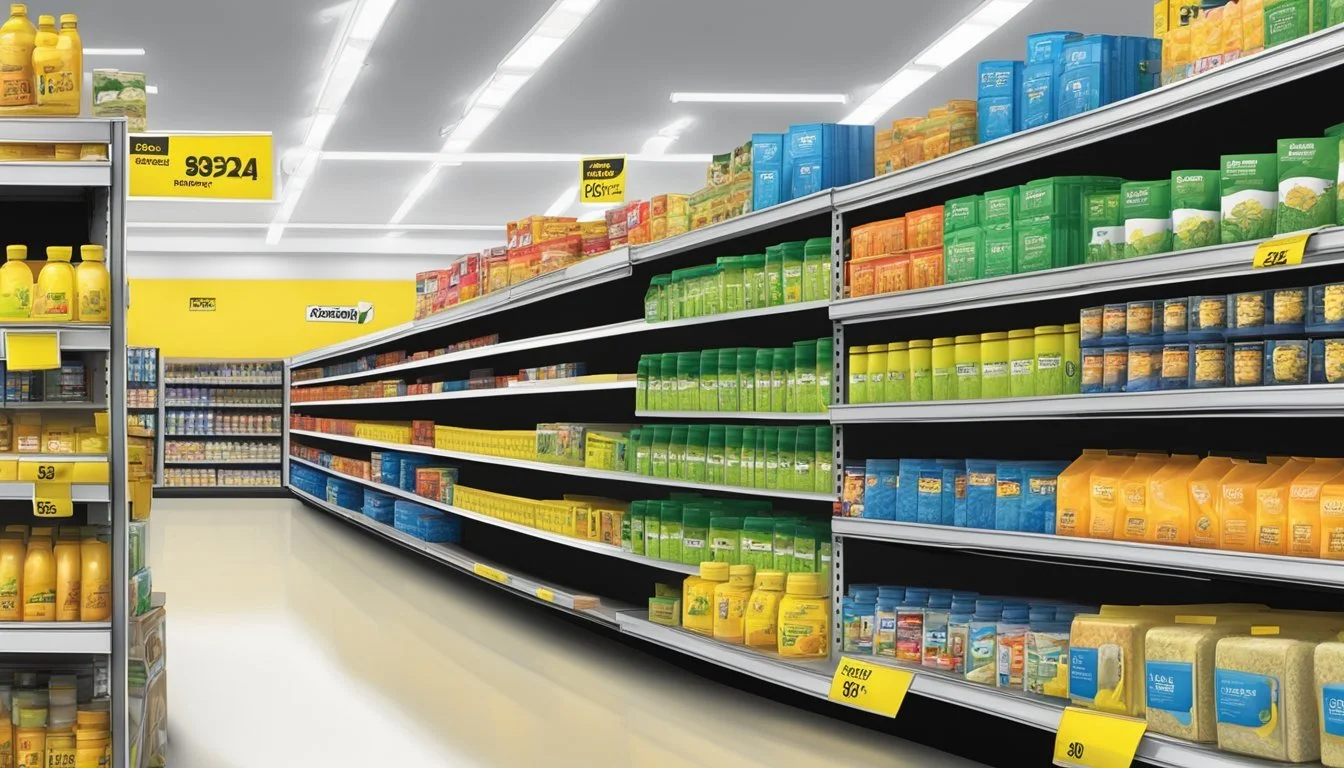Is Dollar General Cheaper Than Walmart?
A price comparison of budget retailers
Shoppers seeking the best deals often find themselves torn between Dollar General and Walmart. These retail giants compete fiercely for budget-conscious consumers, each claiming to offer unbeatable prices.
Despite its name, Dollar General is generally not cheaper than Walmart. Recent price comparisons reveal that Walmart consistently offers lower prices on a variety of common household items and groceries. While the difference may be slight on some products, it can add up to significant savings over time for savvy shoppers.
Both stores cater to cost-conscious consumers, but Walmart's larger size and greater purchasing power often translate to better deals. Walmart also typically provides more variety and bulk-buying options, allowing customers to save even more. However, Dollar General's smaller stores and convenient locations may appeal to those prioritizing quick trips over absolute savings.
Comparing Retail Models
Retail models significantly impact pricing strategies and consumer experiences. Different approaches by dollar stores and traditional retailers shape their competitive positions in the market.
Dollar Store Dynamics
Dollar stores like Dollar General employ a unique retail model. They focus on small-format stores in convenient locations, often in rural areas or urban neighborhoods. These stores stock a limited selection of everyday items at low prices.
Dollar stores keep costs down through efficient operations. They typically have fewer staff and simpler store layouts than larger retailers. This allows them to offer products at competitive prices, sometimes 20% to 40% below full-price retailers.
Many items at dollar stores are priced under $10, appealing to budget-conscious shoppers. However, their limited selection means customers may not find everything they need in one trip.
Traditional Retailers
Walmart represents the traditional big-box retail model. It offers a vast selection of products across many categories in large stores. Walmart's scale allows it to negotiate lower prices from suppliers.
The company's strategy focuses on everyday low prices rather than frequent sales. This approach aims to build trust with customers and encourage repeat visits.
Walmart's larger stores enable bulk buying options, potentially leading to additional savings for customers. The retailer also invests in technology and e-commerce to compete with online giants like Amazon.
Impact of Retail Strategies on Pricing
Different retail models lead to varied pricing outcomes. Dollar stores often appear cheaper at first glance due to their $1 price points on many items. However, price comparisons reveal a more complex picture.
Recent studies show Walmart's prices are often lower than dollar stores. One comparison found Walmart was cheaper on 10 out of 12 items checked against Dollar General. Food and beverages, in particular, tend to be less expensive at Walmart.
Retailers' strategies affect not just prices but also shopping experiences. Dollar stores offer quick, convenient trips for basic needs. Traditional retailers provide one-stop shopping with wider selections.
These differences in retail models influence consumer choices based on factors like price, convenience, and product variety.
Price Point Analysis
Dollar General and Walmart compete fiercely on pricing for everyday items. Their strategies differ across product categories, impacting consumer savings. Key factors include store locations, inventory management, and target demographics.
Everyday Essentials
Dollar General often offers lower prices on small quantities of basic items. A pack of paper towels costs $4.50 at Dollar General versus $4.97 at Walmart. Toilet paper pricing shows a similar trend, with Dollar General's 4-pack priced at $3.75 compared to Walmart's $3.97.
For cleaning supplies, Dollar General's house brand provides savings. Their all-purpose cleaner sells for $2.00, while Walmart's Great Value brand is $2.47. Laundry detergent shows a mixed picture, with Dollar General's smaller sizes priced competitively but Walmart winning on bulk purchases.
Personal care items like shampoo and toothpaste are generally cheaper at Walmart, especially when buying name brands in larger sizes.
Grocery Basics
Walmart typically edges out Dollar General on grocery pricing. Recent analysis shows Walmart's food prices are 6.6% lower overall. This advantage is most apparent in staples like milk, bread, and eggs.
A gallon of milk at Walmart averages $3.18, while Dollar General charges $3.50. Bread prices follow a similar pattern: $1.98 at Walmart versus $2.25 at Dollar General. Eggs show the starkest difference, with Walmart's dozen priced at $2.78 compared to Dollar General's $3.45.
Canned goods and dry pantry items have smaller price gaps. Dollar General occasionally beats Walmart on these items during sales or with their private label brands.
Household and Health Items
Dollar General offers competitive prices on small quantities of household goods. Light bulbs, batteries, and kitchen utensils often cost less at Dollar General when comparing single units or small packs.
Health and beauty items present a mixed picture. Dollar General's private label over-the-counter medicines are often cheaper than Walmart's equivalents. A bottle of store-brand acetaminophen costs $4.00 at Dollar General and $4.47 at Walmart.
Walmart gains an edge on name-brand health items and larger sizes. Their bulk packs of bandages, vitamins, and first aid supplies typically offer better value. Walmart's pharmacy services and broader selection also contribute to lower overall health-related costs for many shoppers.
Product Selection and Availability
Walmart and Dollar General differ significantly in their product offerings and inventory management. These differences impact customer choices and shopping experiences at each retailer.
Brand Availability
Walmart carries a wider range of national brands compared to Dollar General. Shoppers can find popular names like Tide, Kraft, and Coca-Cola at both stores, but Walmart typically offers more variety within each brand. For example, Walmart may stock multiple sizes and scents of Tide detergent, while Dollar General might have only one or two options.
Walmart also tends to carry higher-end brands that Dollar General does not, particularly in electronics, clothing, and personal care categories. This broader selection can be appealing to customers seeking specific brand-name products.
Private Labels and Exclusives
Both retailers have developed their own private label brands to offer lower-priced alternatives to national brands. Walmart's Great Value and Equate lines span numerous product categories, from food to household items. Dollar General's private brands include DG Home, Clover Valley, and Smart & Simple.
These store brands allow both retailers to provide competitive pricing on everyday essentials. Dollar General's private labels make up a larger portion of their overall inventory compared to Walmart, helping them maintain lower prices across the store.
Inventory and Stock
Walmart's larger store footprint allows for significantly more inventory than Dollar General. A typical Walmart Supercenter stocks around 60,000 unique items, while Dollar General carries about 12,000 products. This difference is most noticeable in categories like electronics, clothing, and fresh groceries.
Dollar General focuses on fast-moving consumer goods and household essentials. Their smaller stores and limited selection allow for quicker restocking and inventory turnover. Walmart's vast selection can sometimes lead to out-of-stock issues on popular items, while Dollar General's streamlined inventory may offer more consistent availability of core products.
Shopping Experience
Dollar General and Walmart offer distinct shopping experiences, each with its own advantages and drawbacks. The layout, navigation, and checkout processes at these stores impact customer convenience and satisfaction.
Store Layout and Navigation
Dollar General stores are typically smaller, with narrow aisles and densely packed shelves. This compact design allows for quick trips but can feel cramped during busy times. Products are organized by category, though the arrangement may vary between locations.
Walmart stores are much larger, featuring wide aisles and clearly marked departments. This spacious layout accommodates a broader product range and allows for easier navigation. However, the size can make quick shopping trips more time-consuming.
Both retailers use signage to guide customers, but Walmart's larger format often includes overhead directional signs and electronic price checkers throughout the store.
Checkout and Payment Options
Dollar General offers a streamlined checkout process with fewer registers, suitable for its smaller store size and customer volume. Self-checkout options are limited or unavailable in most locations. The stores accept cash, debit cards, credit cards, and EBT.
Walmart provides more diverse checkout options:
Traditional cashier lanes
Self-checkout kiosks
"Scan & Go" mobile app for select stores
Walmart's multiple payment methods include:
Cash
Debit/credit cards
EBT
Walmart Pay (mobile payment)
Gift cards
The variety of options at Walmart can reduce wait times during peak hours, enhancing the overall shopping experience for customers with different preferences.
Promotions and Savings Strategies
Both Dollar General and Walmart offer various ways for customers to save money on their purchases. These strategies can significantly reduce costs for savvy shoppers who take advantage of them.
Coupon Utilization
Dollar General and Walmart accept manufacturer coupons, allowing customers to stack discounts. Dollar General provides digital coupons through its app, which can be applied at checkout. Walmart accepts paper and digital coupons, including those from third-party apps.
Shoppers can find coupons in local newspapers, on company websites, and through coupon databases. Some items may have peelies or hangtags with instant savings attached directly to the product.
Loyalty Programs
Dollar General's DG Digital Coupons program offers personalized savings based on shopping habits. Members can load digital coupons to their account for easy redemption at checkout.
Walmart+ is a paid membership program that provides benefits like free shipping, fuel discounts, and early access to special deals. It also includes Scan & Go technology for faster in-store checkout.
Both programs track purchases, allowing for targeted promotions and rewards.
Digital and Cash-Back Offers
Dollar General's app features weekly ads and exclusive digital coupons. Users can create shopping lists and access store-specific deals.
Walmart's app offers similar features, including Walmart Pay for contactless checkout. The retailer also participates in cash-back programs like Ibotta and Rakuten.
Both stores frequently run promotional events with additional savings. Shoppers can stack these offers with coupons and cash-back apps to maximize discounts.
Clearance sections in both stores provide opportunities for significant markdowns on various products.
Accessibility and Store Location
Dollar General and Walmart differ significantly in their store locations and accessibility. These factors play a crucial role in customer convenience and shopping choices.
Urban vs. Rural Presence
Dollar General has a strong presence in rural areas, often serving communities with limited retail options. The company operates over 18,000 stores across 47 states, with many locations in small towns and rural regions. These stores are typically smaller, around 7,000 square feet, making them easier to place in areas with less available real estate.
Walmart, in contrast, maintains a mix of urban and rural locations. The retailer has approximately 4,700 stores in the United States, including supercenters, neighborhood markets, and Sam's Club warehouses. Walmart stores are generally larger, ranging from 30,000 to 180,000 square feet, which can limit their presence in densely populated urban areas or small towns.
Expansion and Growth
Dollar General has been rapidly expanding, opening hundreds of new stores annually. The company focuses on filling gaps in underserved markets, often targeting food deserts where residents lack easy access to fresh groceries. This strategy has led to Dollar General becoming the largest U.S. retailer by store count.
Walmart's growth strategy differs, emphasizing e-commerce and existing store improvements. While the company still opens new locations, its expansion rate is slower than Dollar General's. Walmart has invested in remodeling stores, enhancing online shopping capabilities, and improving delivery services to compete with online retailers.
Both chains continue to adapt their strategies to meet changing consumer needs and market conditions. Dollar General's smaller format allows for quicker expansion, while Walmart leverages its size and resources to enhance its omnichannel presence.
Considerations for Bulk Purchases
Bulk buying can significantly impact savings when comparing Dollar General and Walmart. The availability and pricing of larger quantities often differ between these retailers.
Package Sizes and Quantities
Walmart typically offers a wider range of package sizes, including bulk options. Their larger stores accommodate pallets and multi-packs of popular items. Dollar General, with its smaller footprint, focuses on more compact sizes.
Walmart's bulk offerings often include family-size cereal boxes, multi-packs of paper goods, and large containers of cleaning supplies. These larger quantities can provide better value per unit.
Dollar General's inventory leans towards smaller packages. This suits customers who prefer not to store excess goods or have limited storage space. Their selections cater to immediate needs rather than long-term stocking up.
Cost-Benefit of Bulk Buying
Buying in bulk at Walmart can lead to substantial savings over time. The per-unit cost of bulk items is generally lower than smaller packages. This price advantage becomes evident in staples like rice, pasta, and canned goods.
Dollar General's pricing model differs. While they may not offer extensive bulk options, their everyday low prices on regular-sized items can be competitive. This approach benefits shoppers who can't afford large upfront costs for bulk purchases.
Walmart's bulk pricing often beats both Dollar General and Family Dollar on a per-unit basis. However, shoppers must weigh the initial higher cost against long-term savings. Storage space and product shelf life are crucial factors in this decision.
Economic Factors Influencing Prices
Price differences between Dollar General and Walmart stem from complex economic factors. These include broader market trends and each retailer's unique cost structures and strategies.
Inflation and Market Changes
Inflation impacts both Dollar General and Walmart's pricing. As costs for goods, labor, and transportation rise, retailers must adjust prices. In recent years, Dollar General has raised food prices more aggressively than Walmart.
NPR found a 23% average price increase on select items at one Walmart store from 2019 to 2024. This reflects the broader inflationary pressures affecting all retailers.
Economic downturns can drive more customers to discount stores. During challenging times, both chains may adjust pricing and inventory to attract budget-conscious shoppers.
Comparative Cost Analyses
Walmart generally maintains lower grocery prices than Dollar General. A Bank of America study found Walmart's food prices consistently undercut Dollar General's in Dallas stores.
Dollar General keeps costs down through strategies like:
Smaller store formats
Limited product selection
Focus on private label brands
Walmart leverages its massive scale for purchasing power. This allows it to negotiate better deals with suppliers and pass savings to customers.
Price comparisons vary by product category. While Walmart leads in groceries, Dollar General may offer better deals on household goods and personal care items.
Additional Considerations
Comparing Dollar General and Walmart goes beyond just price. Factors like product selection, store locations, and shopping experience also play important roles in determining overall value for consumers.
True Dollar Store Comparison
Dollar Tree offers a different pricing model than Dollar General, with most items priced at $1.25. This makes it a true "dollar store" competitor to both Dollar General and Walmart. Dollar Tree's fixed pricing can lead to significant savings on certain items, especially party supplies, greeting cards, and household goods. However, product sizes may be smaller to maintain the low price point. Dollar Tree's selection is more limited than Walmart or Dollar General, focusing primarily on non-perishable goods and seasonal items.
Consumer Reports and Studies
Independent studies provide valuable insights into price comparisons between retailers. Consumer Reports has conducted price checks comparing Dollar General, Walmart, and other retailers. Their findings often show Walmart having a slight edge in overall pricing, especially on name-brand items. However, these studies also note that Dollar General can be competitive on certain product categories, particularly in household essentials and personal care items. Consumers are advised to compare prices on specific items they frequently purchase to determine which store offers the best value for their needs.
Decor and Non-Essential Goods
Dollar General and Walmart differ significantly in their offerings of decor and non-essential items. Dollar General typically has a smaller selection but can offer surprisingly good deals on seasonal decor and basic home goods. Walmart's larger stores provide a wider range of options in home decor, furniture, and non-essential items. Walmart.com expands this selection even further, often with competitive online pricing. For budget-conscious shoppers seeking decor items, Dollar General can be a good first stop, while Walmart offers more variety and often higher quality options at various price points.





